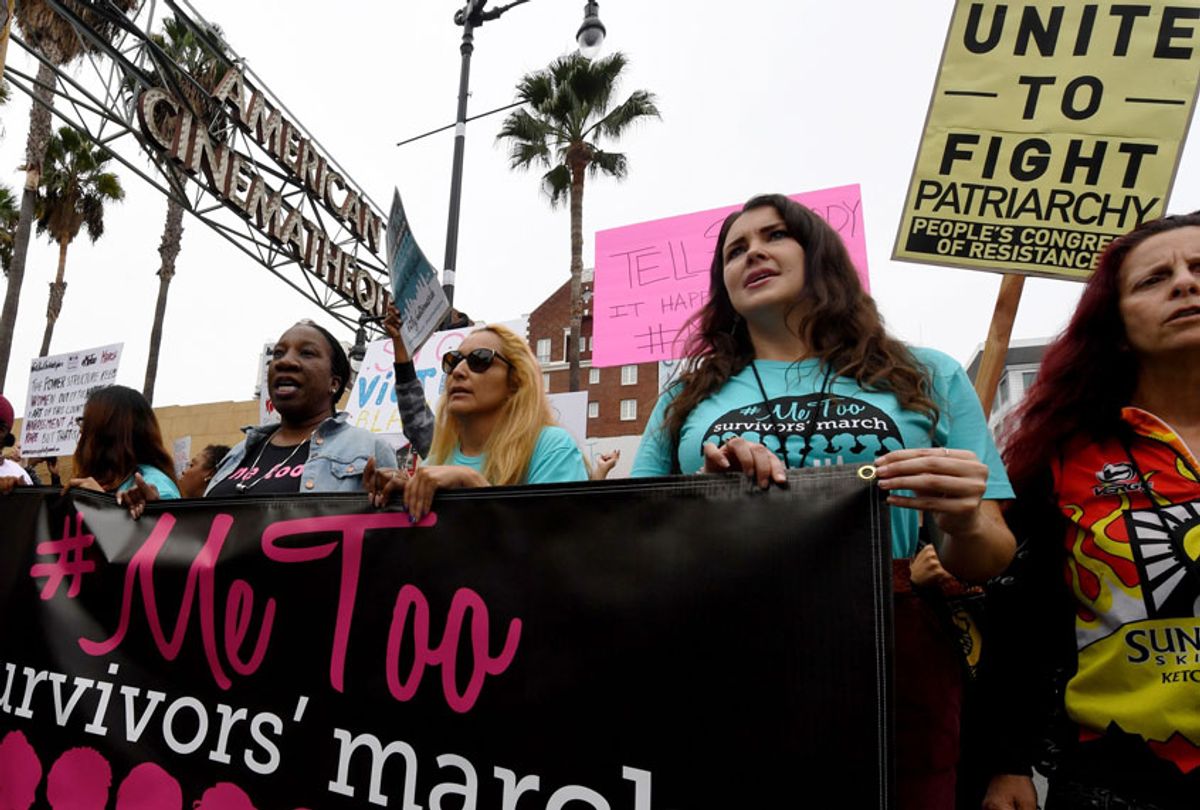This May, the National Gallery of Art in Washington, D.C., was to showcase the work of two famous artists: one of painter Chuck Close and another of photographer Thomas Roma. Both exhibitions, however were cancelled due to allegations of sexual harassment.
The public debate sparked by the cancellations has centered around the question, is it possible to separate the value of art from the personal conduct of the artist?
As a scholar of aesthetics and gender studies, I believe, in the wake of #MeToo this is a good time to revisit the argument of Russian poet Alexander Pushkin about the incompatibility of genius and evil.
Genius and evil
In his short play from 1830, “Mozart and Salieri,” Pushkin fictionalizes an encounter between the composer Antonio Salieri and his younger friend, Wolfgang Amadeus Mozart, in Vienna, Austria. Based on existing rumors at the time, Pushkin presents Salieri as envious of Mozart’s genius to the point of poisoning him at the meeting.
Pushkin’s claim in this play was that the human value of good defines genius, and hence committing a crime disqualifies one from being a genius. Based on this presentation of Salieri as evil, his reputation as a composer was tarnished.
After new research suggested that Mozart died from natural causes, most probably a strep infection, views on Salieri’s music also changed. With this new information, Pushkin’s argument was revisited, and Salieri’s reputation in the music community started to improve, demonstrated by recorded albums and staging of his operas.
This goes to show how art makers and their audiences become emotionally attached to artists and composers as individuals, and not just to their music or painting. Pushkin himself identified strongly with Mozart.
And the change in attitudes to Salieri also supports Pushkin’s original argument that how genius is understood is strongly correlated with human values, where good and genius reinforce each other.
The debate
In the current debate in the art world over this issue, several experts have said that the value of art should not be associated with the personal conduct of its maker. For example, Tom Eccles, executive director of the Center for Curatorial Studies at Bard College, suggested that “we can’t not show artists because we don’t agree with them morally; we’d have fairly bare walls.” An example would be be that of the famous painter Caravaggio, who was accused of murder and whose works continue to be on display.
However, James Rondeau, the president and director of the Art Institute of Chicago, disagreed that museums could present their decisions about the value of the artwork as totally separate from today’s ethics. Rondeau said:
“The typical ‘we don’t judge, we don’t endorse, we just put it up for people to experience and decide’ falls very flat in this political and cultural
moment.”
The #MeToo ethical challenge
This public debate has gained significant traction in the art world because the #MeToo movement has redefined sexual harassment as evil. Started by Tarana Burke, an African-American civil rights activist in 2006 and spread by Alyssa Milano, an American actress and activist, as a Twitter campaign in 2017, the #MeToo movement has become a social media-driven collective voice. It has presented sexual harassment and sexual violence as harm serious enough to warrant recognition and social change.
Consequently, a number of artists have come out with their experience of sexual harassment. Five women came forward accusing Thomas Roma, a photographer and professor, of sexual misconduct. In the case of Chuck Close, artists Langdon Graves, Delia Brown and Julia Fox described in interviews and on social media platforms the anguish and self-doubt his actions had caused them as individuals and also as artists.
Delia Brown, for example, described how Chuck Close told her at a dinner that he was a fan of her work and asked her to pose for a portrait at his studio. She said she was “over the moon” and excited “because having your portrait done as an artist by Chuck Close is tantamount to being canonized.”
However, she was shocked when he asked her to model topless, not a practice that he pursued with other famous artists. Brown refused. Explaining her anguish, she felt he saw her only as a body rather than an important artist and felt manipulated. She said “a sense of distrust and disgust” has stayed with her. Other artists made similar allegations of having been invited to Close’s studio to pose for him and being shocked by his behavior.
Chuck Close chose to downplay the harm done to them as persons and artists by dismissing their words. He said the “last time I looked, discomfort was not a major offense.”
Genius redefined
The point this reinforces is that if sexual harassment is wrong then the value of artwork being exhibited in a public museum is questionable.
Scholar Roxane Gay, the best-selling author of the essay collection “Bad Feminist,” sums up why it is so evil, when she explains the cost to women. She says:
“I remember how many women’s careers were ruined; I think of those who gave up their dreams because some ‘genius’ decided indulging his thirst for power and control mattered more than her ambition and dignity. I remember all the silence, decades and decades of enforced silence, intimidation, and manipulation, that enabled bad men to flourish. When I do that, it’s quite easy for me to think nothing of the supposedly great art of bad men.”
This debate has also shown how the definitions of evil in Pushkin’s “genius and evil” argument are also subjective and depend on human values at a particular time. #MeToo has changed the public view on sexual harassment. Indeed, the public debate surrounding the decision by the National Gallery of Art to cancel two exhibitions has been as much about the value of human beings as it has been about the value of art.
Irina Aristarkhova, Associate Professor, Penny W. Stamps School of Art & Design, University of Michigan



Shares